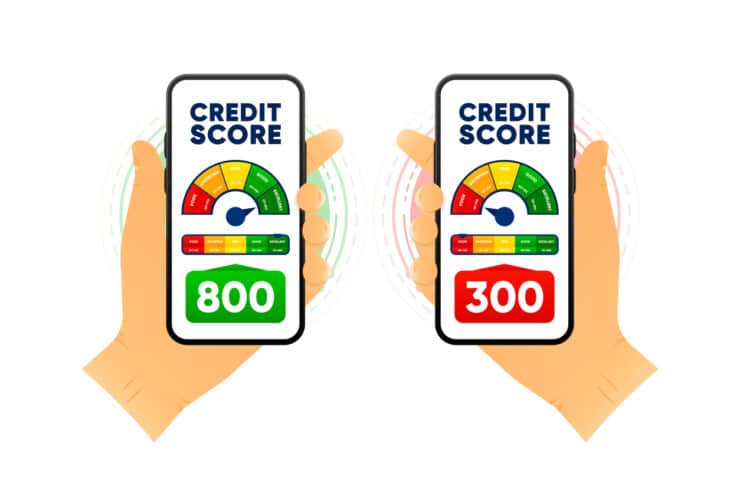Understanding your credit score – including how it’s calculated and what you can do to build and maintain a solid one – is key to your continued financial health. That’s because, as you may know, the higher your credit score, on a scale from 300 to 850, the better your chances of snagging the best rates for loans. And that can ultimately save you thousands of dollars when it comes time to borrow money for a home or other big ticket item.
And …. If a big mortgage is not in your immediate future, there are plenty of other reasons you need a solid credit score. Such as? Having good or excellent credit also means you will potentially pay less for rent and car insurance (and receive lower interest rates on credit cards) than someone with a lower score.
Multiple Credit Scores
When it comes to credit scores, there is – unfortunately – no ‘one and done’ method for figuring out what your score is. That’s because most adults with credit don’t just have one score. Instead, many of us have dozens of (similar) scores floating around because different companies want to know different things about our spending habits and payment histories.
We’ll focus on the two major credit scoring models: FICO and VantageScore.
A Brief Scoring History
FICO, which stands for the Fair Isaac Corporation, was created in 1989. FICO was a pioneer in establishing a method for calculating credit scores from information collected by credit reporting agencies, according to the Consumer Financial Protection Bureau.
Some 17 years later, in March 2006, the three largest national credit reporting agencies — TransUnion, Equifax, and Experian — came together to create VantageScore, a method designed to compete with FICO. Updated versions of both scoring models continue to be used today by millions.
How They Are Different
When it comes to what differentiates FICO and VantageScore, one main distinction is this: trended credit data.
VantageScore 4.0
In 2017, VantageScore 4.0 was launched and began using what’s known as “trended credit data” that reflects changes in someone’s credit behaviors over time, instead of using individual credit-history records that typically show a point-in-time from an individual’s credit history. That means VantageScore 4.0 considers how your credit utilization changes. Credit utilization is the amount of credit being used on all of your credit card accounts compared to the amount of total credit available to you. Using such data can be beneficial for someone who has been working to pay down credit card debt over time.
FICO
FICO and other scoring models, however, typically use only someone’s most recent utilization rate when developing scores, meaning they don’t take progress in paying down debt into account. So someone who has made progress in paying off debt could potentially have a better VantageScore than one developed by FICO or other models.
Improving All of Your Credit Scores
Want to work to improve your credit scores? It’s pretty simple. Do these things consistently:
-
Pay all of your bills on time, every time.
-
Keep your balances low by using 30% or less of the credit available to you.
-
Don’t apply for credit cards you don’t need.
-
Don’t close older accounts, unless they are charging high fees. If that’s the case, contact the company to see if you can switch to a no-fee card with the same lender.
-
Check your credit reports every few months to make sure there are no errors that could be dragging down your scores.
Note: Those with the SavvyMoney tool have 24/7 access to their VantageScore and other real-time financial data.
With reporting by Casandra Andrews






